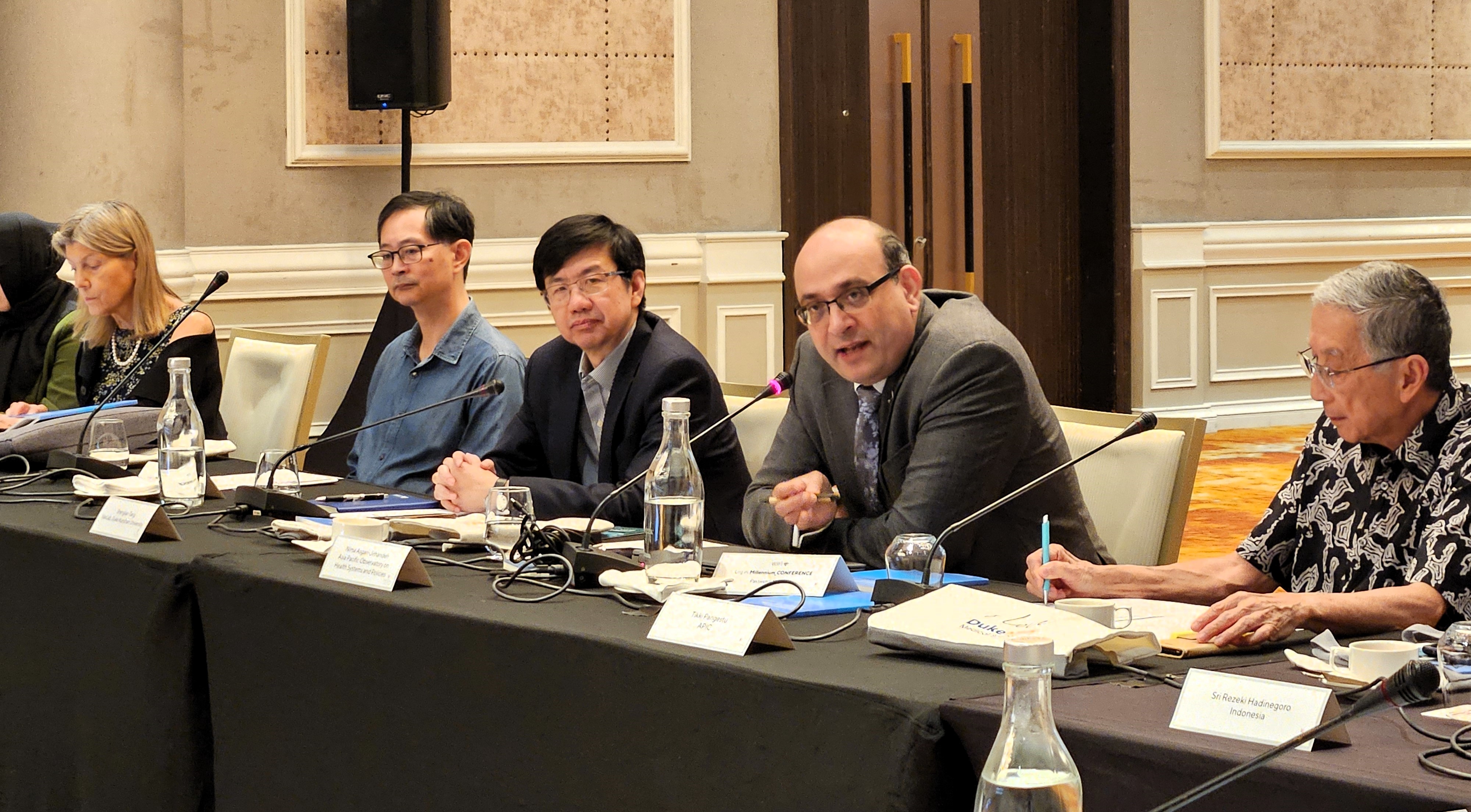The study provided an overview of the National Immunisation Programmes (NIPs) of 13 countries from the Association of Southeast Asian Nations (ASEAN) and South Asian Association for Regional Cooperation (SAARC), and the challenges they face in achieving universal vaccine coverage. To enable comparative analysis, countries were grouped based on their eligibility for Gavi support and level of socio-economic development: Gavi-eligible countries (Cambodia, Lao PDR, Myanmar, Pakistan, Bangladesh), Gavi-ineligible middle-income countries (MICs) (Indonesia, Philippines, Viet Nam, Sri Lanka) and Gavi-ineligible non-MICs (Malaysia, Singapore, Thailand, India).

From left: Prof. Heidi Larson - Professor of Anthropology, London School of Hygiene and Tropical Medicine,
Dr. Patrick Tan - Senior Vice Dean for Research of Duke-NUS, Dr. Shenglan Tang - Mary D.B.T. and James H. Semans International Distinguished Professor of Duke University, Dr. Nima Asgari-Jirhandeh - Director of Asia Pacific Observatory on Health Systems and Policies, Dr. Tikki Pangestu – Visiting Professor, Yong Loo Lin School of Medicine, National University of Singapore